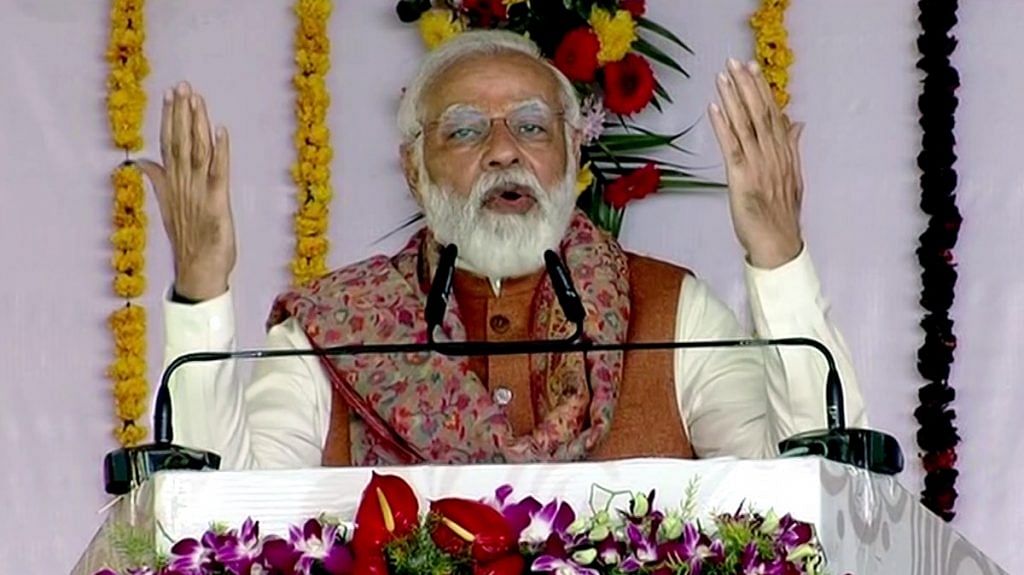How the Narendra Modi government has worked towards strengthening the nation’s democracy forces us to ask, what is democracy. To which, the usual but most effective answer is Abraham Lincoln’s famous injunction: “Of the people, by the people, for the people.” Any government’s quality must be assessed on the basis of its policies. A government, therefore, can truly be ‘for the people’ only if its policies are formulated ‘by the people’ through regular participation ‘of the people’ in the policy-making process.
I argue that the current government has strengthened the nation’s democratic ethos by not only increasing people’s participation in policy formulation but also in policy revision. By doing away with the top-down approach of policymaking wherein a council of planners prepare policies for the nation from Delhi in a one-size-fits-all fashion, the Modi government has erased the last remnant of Nehruvian statecraft.
Take for instance the slum-development policies that India has had. While primarily a state issue, the Union formulated the 1956 Slum Clearance and Improvement Scheme in the second five-year plan. Planned by those sitting in Delhi, the policy aimed at the “improvement and … protection of tenants” in certain Union territories of India. A result of central planning, this policy like many others only reflects the Soviet-style of planning which is now infamous for being dismissive of dissenting views. It not only failed to meet its target but disastrously resulted in a “net-destruction of housing stock” (Hingorani, 2011). Of the total evicted population in Delhi, only 20.6 per cent was resettled by 1977 (as cited in Sivam & Karuppannan, 2002). If the planners in Delhi could not solve Delhi’s problems, little can be expected for the rest of the nation.
Problems lie not only in formulation but also in implementation. While the policy advocated for minimal dislocation of the people, its real-world implications show how the new sites would often disrupt the lives of the slum-dwellers by taking them far from their employment sites. This resulted in many of the people not taking possession of the proposed sites and continuing to reside in slums (Hingorani, 2011).
On the other hand, a democratic government being of the people would listen to the people’s wishes and build them houses where it is convenient for the people and not the government. In this respect, the Modi government conceptualised the Pradhan Mantri Awas Yojana 2015, which aims to provide “Housing for All” by 2022. Among its main categories is the In-situ Slum Redevelopment scheme, which as the name suggests works towards developing slums in the country.
Also read: Modi can’t speak? Tech glitch during WEF speech triggers bogey of ‘teleprompter PM’
Urban local bodies and policy implementation
With great authority at their behest, urban local bodies like municipalities identify slums to be redeveloped and each eligible household is provided with a good home integrated with a kitchen and toilet. This reinforces the people’s will by allowing them a good house at their choice of location.
Unlike earlier, local bodies are now vested with much power. Such decentralisation not only deepens India’s democratic character but also helps in allowing the nation to finally achieve a bottom-up policy approach. This in turn will help India to graduate from a representative democracy to participatory democracy.
Similarly, another major policy of the Modi government is the GST which is revised regularly. While many argue such revisions represent a lack of the government’s foresight, I, however, argue that it shows the government’s receptivity to changing circumstances and opinions. To expect that planners can comprehend this nation’s vast complexities and formulate one perfect policy that requires no amendment would mean being still stuck in the Soviet-era planning model, which clearly has failed miserably.
However, becoming a participatory democracy would be impossible if people don’t participate. Withdrawing grievances from people especially those at the lower rungs of society is difficult. Indians still feel alienated from the bureaucracy which in reality is meant to serve them and therefore often prefer a compromise rather than lodging a complaint.
Therein comes the importance of digital spaces like social media sites which this government has used much to their advantage. Most departments of the government today have social media handles that are usually active. Grievances now can be registered from anywhere and are seldom solved too. This forces us to consider the challenge of digital literacy and while challenges abound, solutions too will inevitably appear. India has always drawn its strength from its people and the more people participate the stronger our democracy becomes.
The author is a student at Tezpur University, Assam, Views are personal.
